Subscribe now to get notified about IU Jharkhand journal updates!
Experiments In Neuro - Economic Decisions
Abstract :
Decision-making is as old as Civilization with Economics being the fulcrum. In a way, undisputedly, economic decision-making represents the evolution and revolution of Economics as an accepted extension of Science.Economic decision-making is critical in the sense that a correct tactic needs to be adopted to make a balance between economics as a science and also an offshoot of interdisciplinary scholarship in the 21st Century. The foundation of stimulus has been neuro-economic decision explorations (merger of philosophies from cognitive science and management. Recently, neuro-economic decision-making has arisen as an interdisciplinary determination that counterparts advance cognitive science in the economics play-field. Some research issues addressed in this paper are;how decision preferences advance through the brain pathways; how the brain considers sources of data and, what intrinsic processes embody conflicting values are shaped through repeatedly producing 'rational' preferences. In short; how does the economic decision-maker choose via? Neurofeedback and what part of the brain aids perform economic decision creation? The aim and objective(s) of this paper are; throughthe brain's cabling diagram, the paper highlights the potential cause-effect linkage between biology and economics in explaining how economic decision-makers deal with judgment dynamics. The purpose of this paper is to focus on the role of neuro-dynamics to understand decision strategy. The aim is to exhibit empirical mosaics in 'neuro-trajectory feedback tectonic shifts(s)' of 'business' economic decision circuit'. The primary aim is to archetype neuro-feedback by using brain waves (ECG). The objective is to monitor the undercurrents of neurobiological in understanding economic decision behaviour. As regards Methodology,based on 'modulated sound - injections', the study examines neuro-economic fluidconditions and consequential behaviour of 03 (three)economic decision makers and provides the setting for future research. This offers a solution to the lack of understanding of fluid intellect through the measurement of brain activity. The study exhibits key findings and explains how neuro apparatuses explore 'business economic decision - tectonic shifts(s)' through a biological basis. Results suggest that neural signatures cannot simmer down to a single network or a few brain regions. The paper concludes with specific propositions towards rethinking the foundations of economic decision dynamics by providing alternative taxonomy for decision problems.
Keywords :
Neuro-Economics, Decision, EEG, Alpha Waves, SVG, Neuro-Trajectory and Neuronal Shifts.Introduction
Economic decision-making is critical. What typifies the notion of causality in the sciences of mind and brain? Are dissimilar notions a prerequisite for different experimental approaches? Are there variances in notions that are explicitly and implicitly presumed? What counts as causal evidence in Economic Decision Sciences? What role is played by information, including facts, figures, statistics, evidence and substantiation, and physical mechanisms in identifying causal claims of economic sciences of mind and brain? Mental events, however, distributed, provide defining (and, connotation) problems of Social Sciences. What are the basic cognitive operations? How do we use them in judgment, economic decision, action, reason, choice, persuasion, and expression? Do economic decision-makers know what they need to know? How do economic decision-makers choose? What are the best incentives? When is judgment reliable? Can negotiation work? How do cognitive conceptual resources depend on social and cultural location? How do certain products of cognitive and conceptual systems come to be entrenched as shared knowledge and method? The foundation of stimulus has been neuro-economic decision explorations (merger of philosophies from cognitive science and management). Neuroeconomic decision-making has arisen as an interdisciplinary determination to bridge this gap. Extension of neuroeconomic sciences advancescounterparts' of Cognitive Science. The interface between economic decision and brain sciences is not smooth with misconceptions in potentials on either side with the question of how all dissimilar magnitudes come unruffled to offer continual diversity and competitive superiority. Neuroeconomic discoveries posture a challenge to the usual management viewpoint.
Is homo - economicus rational? This is the question that is now challenged. The calculus of homo – economicus emphasized the fact that all organizations / human beings aim at the maximization of profits (gains), utility maximization is non – negotiable and all information is sourced to make a decision that is subject to a set of rational choices. EfeEfeoğlu and YurdanurÇalışkan (2018) argue that 'Homo Economicus or Economic Man, which is the main postulate of Classical and Neo-Classical theories indicate a rational person who makes decisions and pursues wealth for his self-interest (flawless rationality, unlimited cognitive capacity, perfect access to information, and a narrow range of consistent, self-interested goals). But, human-being is not rational agents all the time. Because most of the time, some other factors determine human behaviour than rationality. These could be repetition, imitation, or social norms. Therefore,Behavioral Economics, having introduced a distinctive perspective to Economics, argues that people cannot make rational decisions and can be rational only to a limited extent in their decision'. Some thesis, antithesis and synthesis (aboutthe nature of human decision-making) submitted to this viewpoint are; Homo heuristics, Homo reciprocates, Homo sociological, Homo politicus, and homo duplex. This initiates a debate which forms an experimented basis for this paper.This paper builds on the notes provided by Sheena S. Iyengar, in her Psychology of Choice dissertation titled "Choice and its Discontents". Sheena challenges the rootpostulation that choice (biology and the psychology of choice) is always chosen and unilaterally advantageous.
Research Issues
Decision modellers are frequently criticized for failing to provide accurate representations of the neuro-psychological substrates of decisions. Several authors maintain that recent neuropsychological findings enable choice modellers to overcome this alleged shortcoming. Some advocate a realistic interpretation of neuro-psychological models of choice, according to which these models posit sub-personal entities with specific neuro-psychological counterparts and characterize those entities accurately. Neural - management/neuropsychology and neural sciences are an interdisciplinary field that seeks to explain human decision-making, and the ability to process multiple alternatives and follow a course of action. In the last decade, the development of neuroscience knowledge and tools allowed a growing interest in research linking neuroscience techniques to psychology, marketing, management, economics, and sociology. It studies how managerial behaviour can shape considerate of the mind and how neuro-scientific findings can constrain and guide models of neural management. Converging into a unified discipline, neural studies investigate the neuro-aspects of management decisions. The interdisciplinary field of scholarship draws on management theories, economic theories, psychological theories, statistics theories, mathematical theories, operational research theories, computing theories, experimental economic theories, neuroscience theories, haematology theories, ophthalmology theories, dermatology theories and physiology theories to develop a comprehensive with the ultimate aim of creating a (single) general theories understanding of human decisions. Neuroeconomics provides biologists, economists, psychologists and social scientists with a deeper understanding of how they make their own decisions and how others decide. Neuroscience, when allied with psychology and economics, creates powerful new models to explain why we make decisions.
The conventional understanding that preferences in the fluid are made through rational or logical thought processes is being questioned experimentally. How decision preferences advance through the brain pathways; how the brain considers sources of data and, what intrinsic processes embody conflicting values are shaped through repeatedly producing 'rational' preferences. Yet, the notion that such economic preferences are always made through rational or logical thought processes is being challenged by these experiments. The convergence of neuro-economics with the broader disciplines of business, in particular, those involving decision-making, such as neuro-governance have evolved in the form of dynamic conditions sciences producing a more complete framework for the study of such complex issues. Notwithstanding considerable developments, inquiry of how we make economic decisions stays to posture significant trials for methodical explorations. Erecting an economic decision infers that there is an alternate choice to be factored in. And in such a circumstance, we want not only to detect as many of these substitutions as conceivable but select the one that (1) has a peak prospect of efficiency and, (2) best fits with the goal line, needs, routine, and ethics.
- How does the economic decision maker choose [via.Neurofeedback [?
- What wave of the brain aids performs [economic decision [ creation?
Literature Scan
Fluid brain power refers to the capacity for flexible problem-solving, abstract reasoning, and the ability to adapt to novel situations (Cattell, 1963). This cognitive ability is important in many aspects of life, including academic and professional success, and has been linked to various measures of brain structure and function (Duncan et al., 2000).Research has also shown that fluid brain power is not fixed and can be improved through various interventions, including cognitive training programs and physical exercise (Jaeggi et al., 2008; Colcombe et al., 2004). Additionally, some studies have suggested that certain types of experiences, such as musical training or exposure to a second language, may also enhance fluid brain power (Schellenberg, 2004; Bialystok &DePape, 2009).
While the exact neural mechanisms underlying fluid brain power are still not fully understood, research suggests that it may involve complex interactions between different brain regions and neural networks (Duncan et al., 2000; Gray & Thompson, 2004).Fluid brain power (Gf) is a fundamental aspect of cognitive abilities, involving reasoning, problem-solving, and abstract thinking abilities, which is essential for adapting to novel or complex situations (Cattell, 1963; McGrew, 2009). The concept of fluid brain power has been widely studied in the fields of psychology, neuroscience, and cognitive science, with research indicating that Gf has significant implications for various aspects of life, including academic and occupational success, and general mental health (Deary et al., 2010; Gottfredson, 1997; McGrew, 2009).
Recent research has also examined the neurobiological underpinnings of Gf, with studies indicating that Gf is associated with a distributed neural network, including prefrontal, parietal, and temporal cortices (Duncan et al., 2000; Gray &Chabris, 2003). These brain regions are involved in attentional control, working memory, and cognitive flexibility, which are key components of fluid brain power.Research has also demonstrated that Gf is not a fixed trait but can be improved through various interventions, including cognitive training programs and educational interventions (Melby-Lervåg&Hulme, 2013; Kizilirmak et al., 2021). Additionally, certain lifestyle factors, such as physical activity, sleep, and diet, have also been linked to Gf (Best et al., 2018; Cheval et al., 2019; Erickson et al., 2011).
Fluid brain power (Gf) refers to an individual's capacity to solve problems, reason, and think abstractly. It has been linked to several important life outcomes, such as academic and occupational success, and mental health. The concept of fluid brain power was first proposed by Raymond Cattell (1963), who suggested that it was a key component of general brain power. Since then, numerous studies have been conducted to better understand the nature of fluid brain power, its underlying neural mechanisms, and how it can be improved.One prominent theory of fluid brain power is the neural efficiency hypothesis (Neubauer & Fink, 2009), which suggests that individuals with higher fluid brain power are more efficient in their use of neural resources, allowing them to perform complex cognitive tasks with less effort. This hypothesis is supported by neuroimaging studies that have found that individuals with higher fluid brain power have greater activation in regions of the brain involved in working memory and attentional control, such as the dorsolateral prefrontal cortex (Gray &Chabris, 2003; Kane et al., 2005).
Other studies have investigated the role of genetics in fluid brain power. For instance, twin studies have suggested that genetic factors account for a substantial portion of individual differences in fluid brain power (Deary et al., 2009). More recently, genome-wide association studies (GWAS) have identified specific genetic variants associated with fluid brain power (Snickers et al., 2017). These findings have important implications for the development of interventions aimed at enhancing fluid brain power, as they suggest that genetic factors may need to be taken into account.Research has also examined the effects of various interventions on fluid brain power. One approach that has received considerable attention is cognitive training, which involves engaging in exercises designed to improve cognitive abilities. Several studies have found that cognitive training can lead to improvements in fluid brain power (Au et al., 2015; Melby-Lervåg&Hulme, 2013). However, the effects of cognitive training are limited, with some studies suggesting that gains in fluid brain power may not generalize to other domains (Simons et al., 2016).
In addition to cognitive training, other interventions that have been studied include physical exercise and mindfulness meditation. Physical exercise is associated with improvements in cognitive functioning, including fluid brain power (Erickson et al., 2011). Similarly, mindfulness meditation has been found to improve cognitive control and attentional functioning, which are important components of fluid brain power (Moore & Malinowski, 2009).Overall, the study of fluid brain power has led to important insights into the nature of cognitive abilities and their neural basis. While much progress has been made in understanding the factors that contribute to individual differences in fluid brain power, much remains to be learned about how it can be improved and how it relates to other aspects of cognitive functioning. The study of fluid brain power continues to be an active and exciting area of research, with implications for a wide range of domains, from education and occupational training to the development of interventions aimed at enhancing cognitive abilities.
Aim and Objective(s)
Through the brain's cablingillustration, the paper highlights the potential cause-effect linkage between biology and economics in explaining how 'rational' persons deal with judgment dynamics. The purpose of this paper is to focus on the role of neuro-dynamics to understand decision strategy. The aim is to exhibit empirical mosaics in 'neuro-trajectory feedback tectonic shifts(s)' of economic decision circuit'. The primary aim is to archetype neuro-feedback by using brain waves (ECG). The objective is to monitor the undercurrents of neurobiological in understanding economic decision behaviour. An effort is to elucidate how neural investigations appreciate 'mental tectonic shifts' in economic decision-making.
Methodology
On an embryonic plane, procedures include Electroencephalograph (EEG), Magnetic Resonance Imaging (MRI), Magnetoencephalography (MEG), Computerized Tomography (CT) and Positron Emission Tomography (PET). This research proposes; neuroimaging of the brain, neurophysiological techniques, examination of individual nerve cells, and neuropsychological techniques. Functional Magnetic Resonance Imaging (fMRI), Eye Tracking and Electroencephalography. Functional Magnetic Resonance Imaging (fMRI) quantity plasma stream and Single Neuron Measurement (SNM) quantity reactions of solitary neurons. Each has dissimilar paybacks and approximate outlays associated. Most portionsof macro-scale brain movement in brain expanses whose particular utility is contingent upon explicit assignment brain are deciphering. Magneto Encephalography (MEG) archives magnetic instincts shaped by electrical fluxes in the brain using magnetometers. Electrocardiography (ECG) recordsthe electrical activity of the heart using electrodes. Transcranial Direct Current Stimulation (tDCS) habits continual, low current conveyed to the area of interest via electrodes. Electroencephalography (EEG) recordsthe electrical activity of the brain. Positron Emission Tomography (PET) yields a three-D carbon copy of functional progressions. Transcranial Magnetic Stimulation (TMS) arouse minor regions of the brain. Eye tracking measures the point of gaze (where the subject is looking) or motion of an eye relative to the head. Electrodermal Activity (EDA) or, skin conductance, galvanic skin response (GSR), electrodermal response (EDR), psych galvanic reflex (PGR), skin conductance response (SCR), skin conductance level (SCL), reasons for continuous variation in electrical characteristics of the skin. Brain Mapping centred on plotting (biological) quantities or spatial images occasioning in maps, Blood - Oxygen - Level Dependent Contrast Imaging (BOLD) spots areas of the brain originate to be active at any given time. Cognitive Maps are mental representations of physical locations.
The methodologyof this paper is based on an ongoing research experiment. A few results have been published and this paper extends a few more results. Empirical mosaics in 'neuro-trajectory feedback tectonic shifts(s)' of economic decision circuit' has been examined. A population of 03 decision-makers has been adopted. Based on theoretical models, grounded on an axiomatic groundwork, methodology purposes achieving condensed models of economic decision. This combines fields of economic decision science with aid of analysis techniques of big data in new fields of behaviour. As regards the line of attack, the paper draws to evaluate the influence of the cerebral in shaping economic decisions. The methodology includes a 'modulated sound – injections' neurofeedback procedure via ECG (electro-cardiogram). These waves afford evidence about circumstances and cognitive processes supplemented with the responseevidence and reference runs (based on SVG - analysis) as a part of simulations. Alpha Wave responses have been considered to appreciate the neural activity and how brains respond to tectonic shifts.
Experiment: Observations and Findings
A theoretical posit in incipient economic science sign suggests that all-inclusive and consistent decision-making rests on prior precise emotive indulgence. These transpire at multiple levels of mental manoeuvre. Some occur determinedly and some ensue non-consciously. The approach adopted is a mix of theoretical and experimental. It depicts relevant aspects of business theories and applications of neuro-managerial science in fluid brain power. An attempt is to observe neuro-based techniques to study the brain. On a contemporary level, physiological responses have been measured by just observing neural activity viz. Alpha Waves and Theta Waves, and how brains respond to stimulus presentation. With fluid brain power procedure via EEG, conductors have been used to record the electrical activity of the brain. These waves provide evidence about circumstances and cognitive processes in fluid brain power. In light of debating theories and applications in decision-making, physiological fluid brain power responses have been measured to appreciate the neural activity and how brains respond to sounding. Neuro-based psychoeconomic feedback presents itself as an effective and scientifically based method of treatment. With neuro-based psychoeconomic feedback methodology via EEG, electrodes would be attached to the head to record the electrical activity of the brain via EEG (electroencephalogram). At the same time, these wave patterns certainly alter depending on mental and physical condition. The method thus comprises amplifying targeted behaviour which corresponds to the favourable components of brainwaves. As regards population and sample size, it is estimated that the population of 15 respondents is a fair populace and subjecting respondents to clinical test lead to fair results.
Setting: The EEG conductors were fixed and placed on the scalp to portion electrical activity of the brain. The riposte values were experimented with at 256 Hz (3.9-msec epoch) for 01 second. The subjects experimented with either a single stimulus (S1) or two stimuli (S1 and S2). When two stimuli were exposed, they were reachable in either a harmonized form where S1 was identical to S2 or in a non-matched circumstance where S1 differed from S2.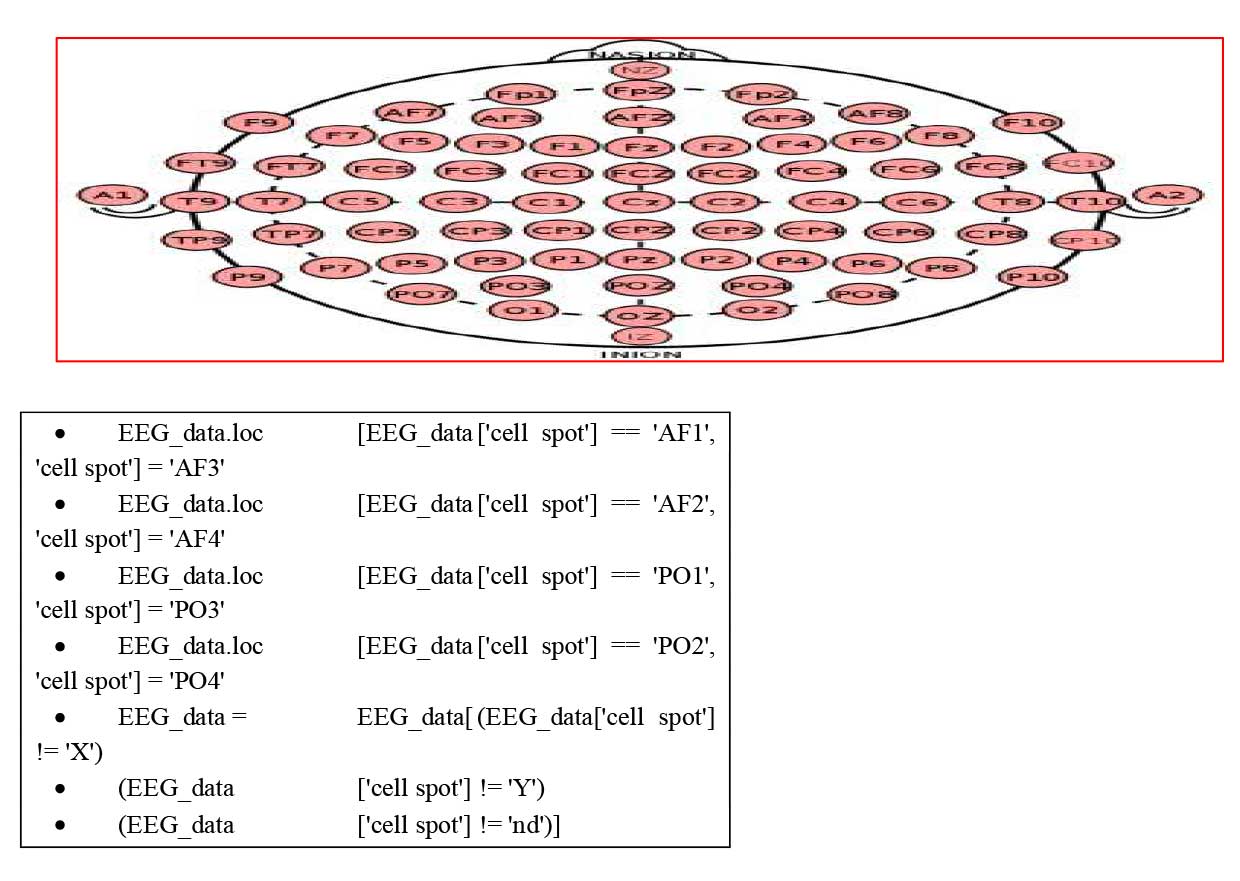
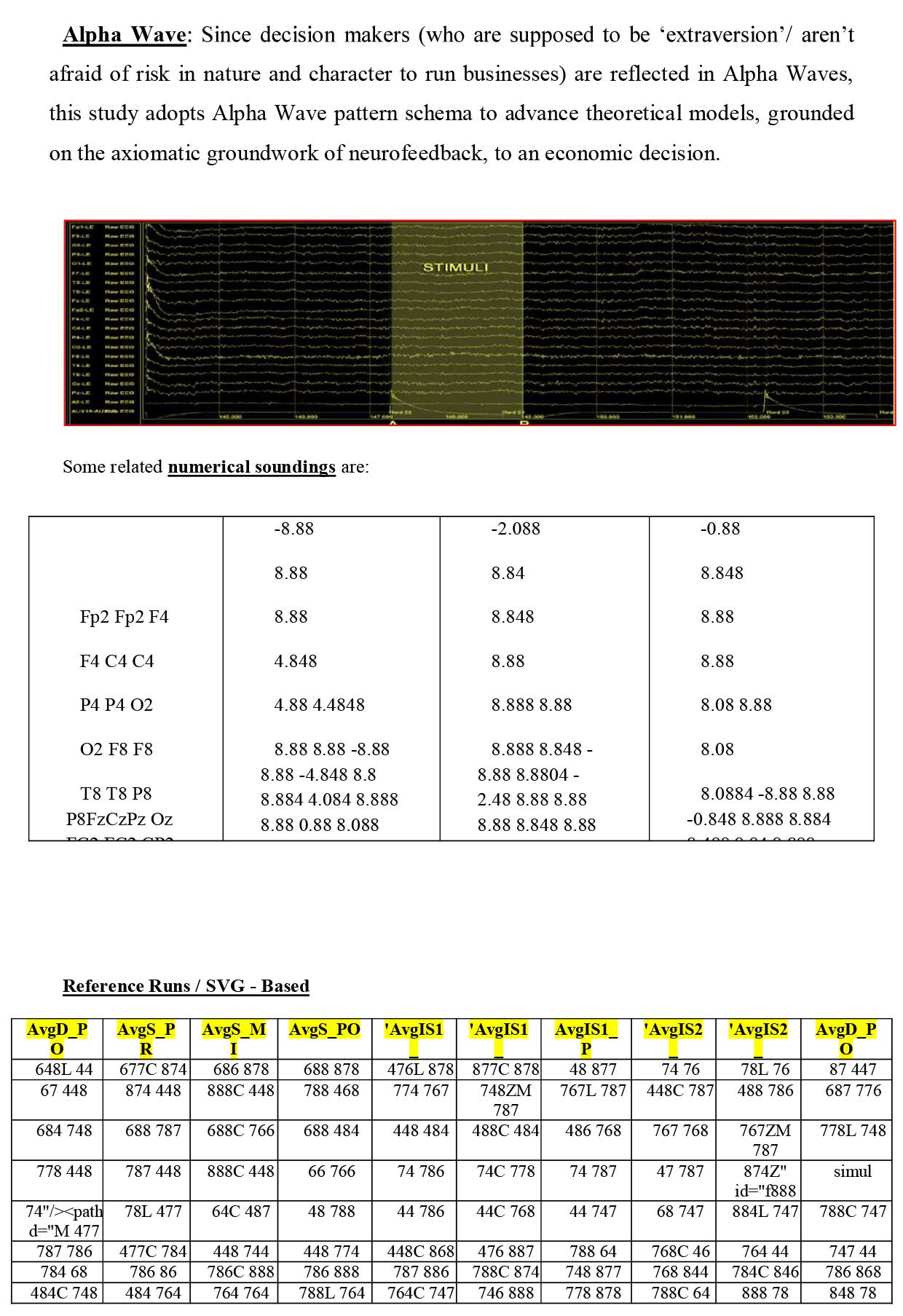


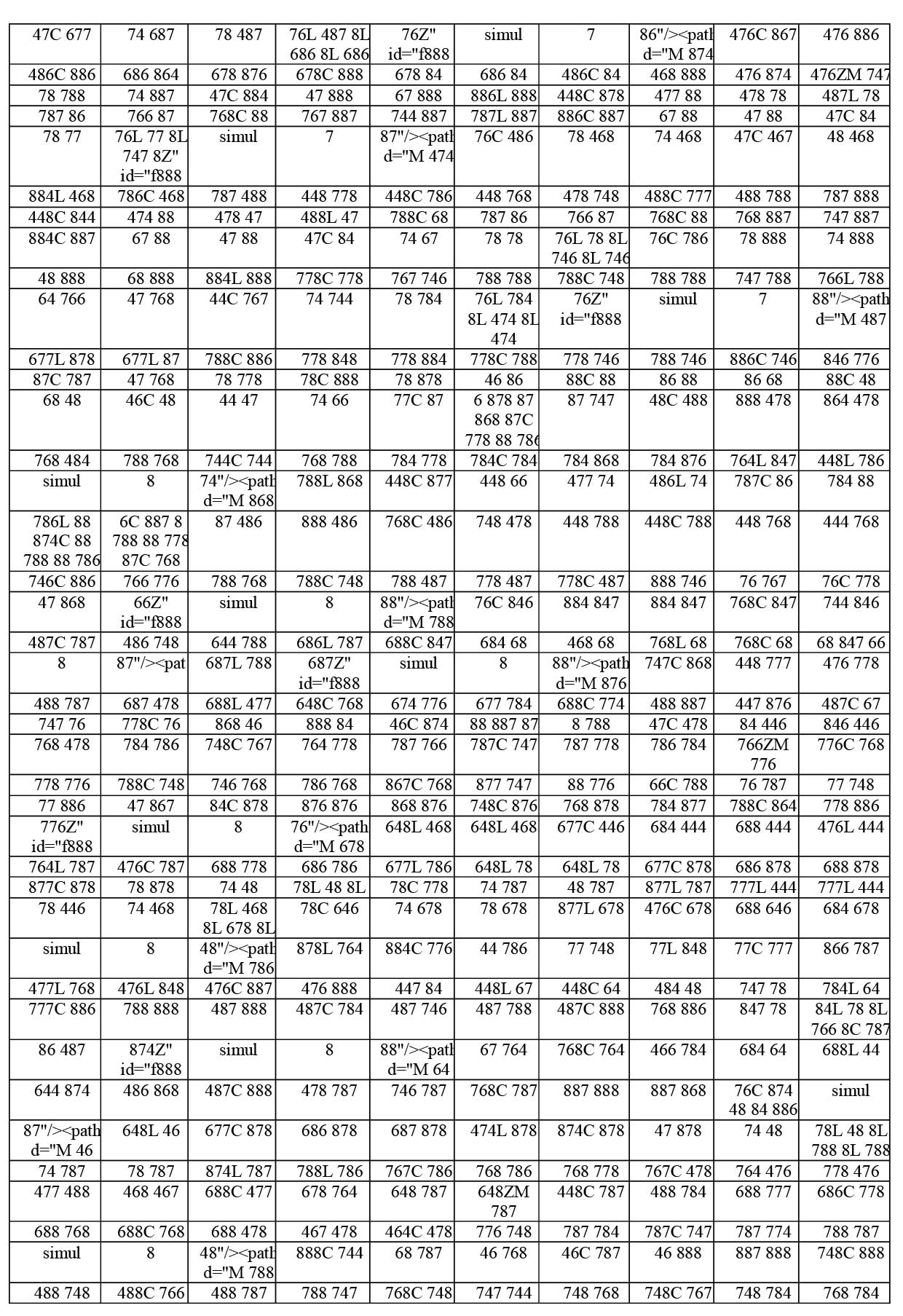
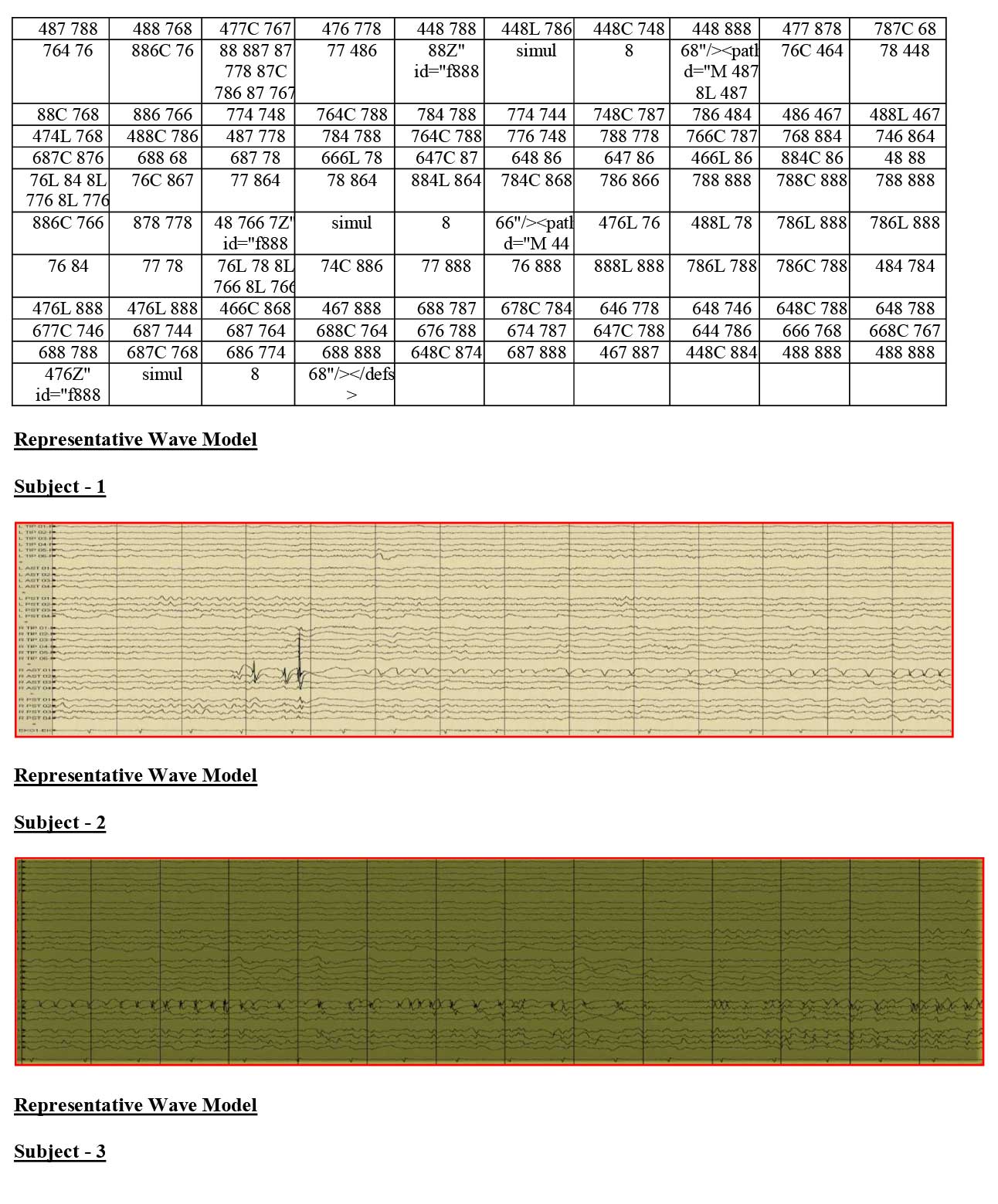
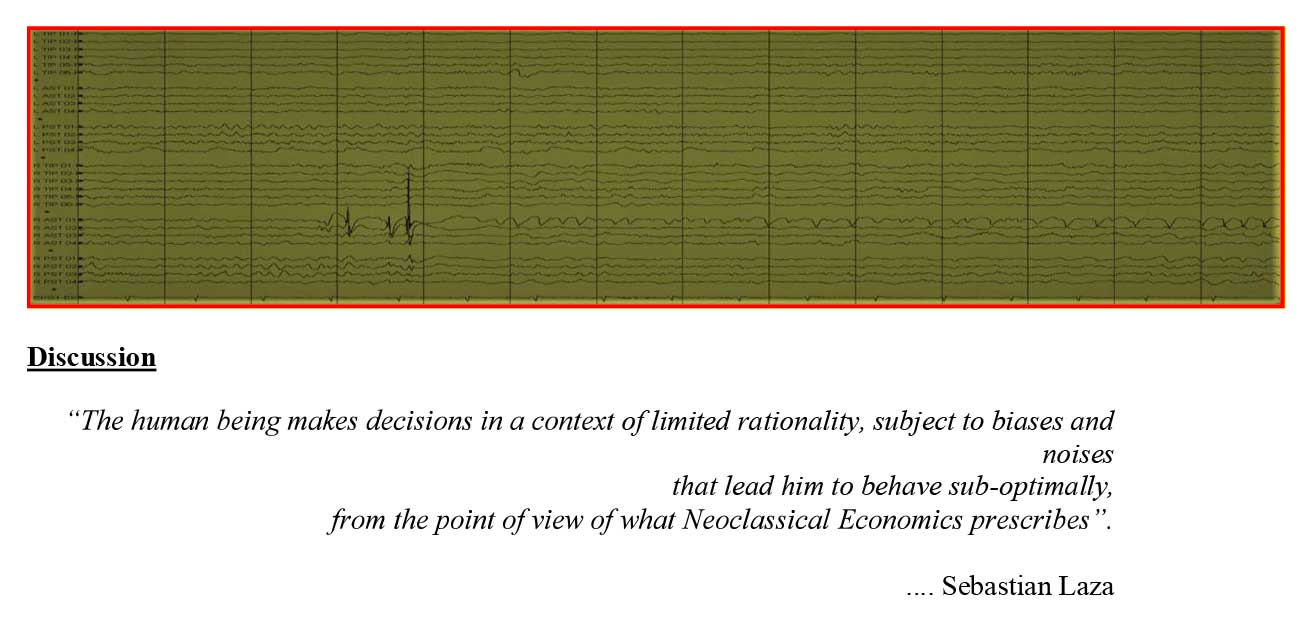
What happens in the brain or is activated when economic decision-makers make judgments or are in the process of making judgments? Is the study of judgment-making via cognito-management processes relevant for economic decision-makers? Many economic decision-makers seek more information than required thereby causing delays because of the time required to process information. This impairs the effectiveness of judgment. In this state, Cognitomanagement seeks to explain judgment-making, the ability to process multiple alternatives and choose the optimal course of action. It studies how management behaviour shapesthe understanding of the brain and guides models of management. What are the coherent brain dynamics underlying prediction, control and judgment-making? Theoretical explanations posit that the human brain accomplishes this through neural computations. Deciphering such transactions requiresan understanding of cognitive processes that implement value-dependent judgment-making. This leads to the formulation of a 'cognito - management judgment making paradox'. The goal is speculation of how the brain implements judgments that are tied to behaviour.
The quantum of information that the pair of the brain provide is passable enough to feed the apparatus for undertaking a decision-making function. How parts of brain structure(s) aid in decision-making is the issue under the microscope of interdisciplinary research. How do brain structures behave? How do brain structure parts oscillate? What patterns do they form? How do we interpret the image, so formed? Above all, how does information, so obtained from this giant play, aid in decision-making? What characteristics do brain structure waves (Alpha) exhibit? This study explains how neuro apparatuses explore 'economic decisional' thinking through analysis of the biological basis of preferences and the significant role of 'neurones' in prototyping managerial neuro-based 'economic decisional' thinking trajectory. Results exhibit monikers for spontaneous counterfactual simulation in the domain of high-level cognition and illustrate how managers engage in 'economic decisional' thinking using eye-tracking techniques. These findings confirmed that the explanation of neural signature cannot boil down to a single network or few brain regions and suggest possible ways to guide neuroscience and the 'judgment curve'.
The selfish side of human beings, that of Adam Smith's famous "invisible hand," is the basis of traditional economic theory. But this selfish side is just a partial approach to the complex human dimension, being necessary to incorporate the emotional side to the economic models, to include the passions that often cloud reason, empathy and trust generation, the collaborative and cooperative spirit, the psychological biases that make markets fall into bubbles, overreactions and panics and our powerful "unconscious rationality”, which dominates much of daily decisions.
….. Sebastian Laza (Argentina)
Economic 'decisional' thinking has a biological basis. The human mind 'believes to see ', instead of 'seeing to believe'. Plotting of neuronal-directed 'economic' decision trajectory, has observed incredible advances since the turn of the Century. To better understand its cognitions, emotions, and behaviours the brain provides trait-like information and its reflexive activity allows for the understanding of responses to stimuli. Critical facets of cognition embrace the capability to generate cerebral diagrams and simulated imaginings and to identify, assimilate, and save configurations of data (Satpathy; 2015 & 2018).Neuroeconomics provides Economists and Social Scientists with a deeper understanding of how they make their own economic decisions, and how others decide. Are we hard-wired to be risk-averse or risk-seeking? How is a "fair economic decision” evaluated by the brain? Is it possible today to predict the purchasing intentions of a consumer? Can we modulate economic behaviour affecting the brain? Neuroscience allied to psychology and economics has powerful models and evidence to explain why we make economic decisions.
Some related numerical soundings observed are
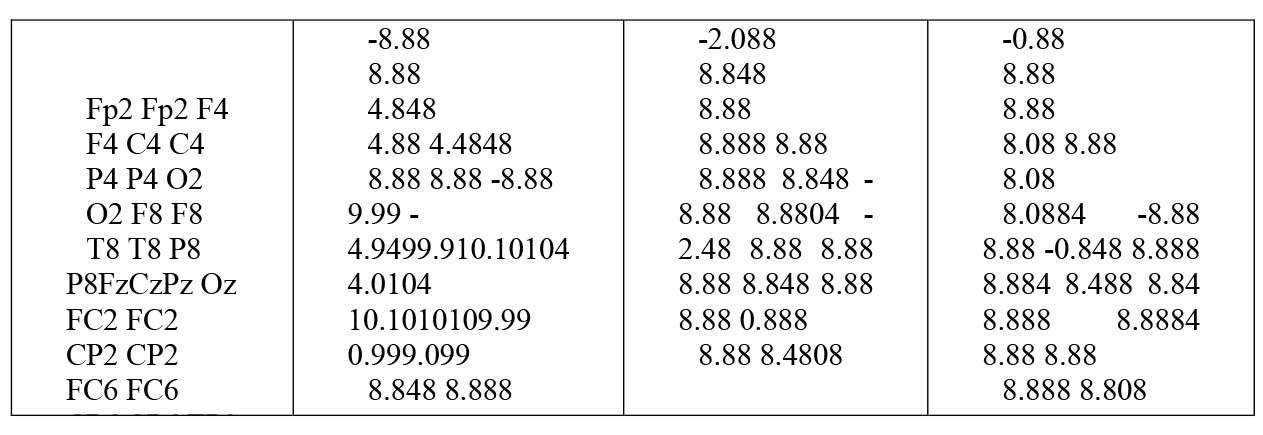
It is observed that the simulated references are meandering between 8.o to 10.10. This range depicts an Alpha State of brain dynamics, despite 'modulated sound - injections'.Positive psychological concepts such as self-efficacy, optimism, resilience, emotional intelligence and growth mindset are well-incorporated in contentment. These positive attributes are also needed for successful engagement-seeking emotional behaviour. Self-efficacy offers the confidence of executing a function competently. Optimism provides the supportive cognitive style to pursue both engagement and contentment. Resilience builds the capacity to deal with adversity. Emotional intelligence furnishes the human factors of empathy and compassion. The growth mindset leverages the abundance of energy. An integrative approach to blend engagement-seeking with contentment fulfils the objective of innovation and flourishing
Conclusion
Behaviorism is a cheval glass that replicates proclivity, viewpoint, and other psychosomatic state. Choice making is an elementary human stroke. Decision making is the most frequented but a never ending duel for mankind. It is akin to a chess board matrix where the moves and the counter moves are just predictable and conjectures but operationalization is difficult. Turning the concepts into quantifiable measurements and dimensions is complicated but not without a solution.
In a nut - shell, decision making is backed up by tenets of neuroscience. Decisions taken in an Alpha State are ascertained to be near-rational. There seems to be an air of relaxation, reduced stress, reduced strain, reduced anxiety, unruffled- thinking and no restlessness. The flow paths of neurons are supposed to be in constant motion. It's a state of relaxed concentration where the information, facts, figures, evidence and statistics are supposed to be retained longer, leading to better economic decision-making. These act as 'Pillars of Cognition' with the power to acquire and absorb information; the 'Soup of Cerebral'. Economists can baptize this as a state of 'biological peak time for decision making. This offers a solution to the lack of understanding of fluid intellect through the measurement of brain activity. The study exhibits key findings and explains how neuro apparatuses explore 'business economic decision - tectonic shifts(s)' through a biological basis. Results suggest that neural signatures cannot simmer down to a single network or a few brain regions. The paper concludes with specific propositions towards rethinking the foundations of economic decision dynamics by providing alternative taxonomy for decision problems.
References
- The Lectures on Rhetoric and Belles Lettres. Ed. J.C. Bryce. Indianapolis: Liberty Press, 1985.
- An Inquiry into the Nature and Causes of the Wealth of Nations. 2 vols. Ed. R.H. Campbell and A.S. Skinner. Indianapolis: Liberty Press, 1976.
- Essays on Philosophical Subjects. Ed. W.P.D. Wightman and J.C. Bryce. Indianapolis: Liberty Press, 1982.
- Harisoorya, A. U., Vidya N., Satpathy J. and D' Mello, L. (2022). Analysis of Significant Electrocardiogram (ECG / EKG) Variations in Psychological Stress, International Journal of Health Sciences and Pharmacy (IJHSP), Srinivas University, Mangalore, Karnataka State, India (International).
- Lectures on Jurisprudence. Ed. R.L. Meek and D.D. Raphael. Indianapolis: Liberty Press, 1982.
- Sahoo, K. and Satpathy, J. (2022). Leveraging Management of Entrepreneur Talent, Proceedings of the 5th Research Compendium of Personnel Today, National Institute of Personnel Management, Pune Chapter, Maharashtra, India. (National)
- Satpathy, J. (2022). Neuro - Traces in Marketing Choice Strategy, Paper presented at the 5th Global Conference on Business and Technology, 04 - 05 Nov 2022, Canterbury Christ Church University, Canterbury, Kent, England Great Britain (International).
- Satpathy, J. and Hejmadi, A. and Weis, L. (2022). Neuro Soundings in Data-Driven Entrepreneurial Decisions, Paper presented at the International Virtual Conference on Cognitive Approach, Social Ethics and Sustainability, 23 - 24 Nov 2022, Woxsen University, Hyderabad, Telangana, India (International).
- Satpathy, J. and Juster, G. N., (2022). Revised Estimates in Choice Guestimates, 9th International Conference on Redefining Organizational Leadership and Management Towards Post Covid - 19 Pandemic, 15 – 16 Sep 2022, The Management University of Africa, Nairobi, Kenya (International).
- Satpathy, J. and Okeyo, W. (2022). Paradigm Shifts in Contemporary Economic Leadership, 9th International Conference on Redefining Organizational Leadership and Management Towards Post Covid – 19 Pandemic, 15 - 16 Sep 2022, The Management University of Africa, Nairobi, Kenya (International).
- Satpathy, J. Laza, S. and Mund, S. (2022). Retrospective View on Reason and Emotion, Proceedings of CMC and Emotion Workshop, June 06 - 07, Department of Psychology and Institute for Learning and Brain Sciences, University of Washington, Seattle, USA (International).
- Satpathy, J., Hejmadi, A. and Weis, L. (2022). Evidence-Based Hematological Soundings in Entrepreneurial Decisions, Paper presented at the National Conference on Human Resource Management and International Business Transformation in the Digital Era, 21 Sep 2022, Dept. of Management Studies, JamiaMilliaIslamia (Central) University, New Delhi, India (National).
- Satpathy, J., Hejmadi, A. and Weis, L. (2022). Evidence-Based Ophthalmologic Soundings in Entrepreneurial Decisions, Paper presented at the National Conference on Human Resource Management and International Business Transformation in the Digital Era, 21 Sep 2022, Dept. of Management Studies, JamiaMilliaIslamia (Central) University, New Delhi, India (National).
- Satpathy, J., Hejmadi, A. and Weis, L. (2022). Ophthalmologic Soundings in Neuro Feedback, Paper presented at the National Bioengineering Conference (NBC 2022), 22-23 Dec 2022, Department of Biotechnology and Medical Engineering, National Institute of Technology (NIT), Rourkela (National).
- Satpathy, J., Hejmadi, A. and Weis, L. (2022). Ophthalmologic Soundings in Neuro-Feedback, Paper presented at 2nd International Conference on Applied Sciences, 24 - 25 Nov 2022, SCMS School of Engineering and Technology (SSET), Vidya Nagar, Palissery, Karukutty, Ernakulam, Kerala, India (International).
- Satpathy, J., Hejmadi, A., Pal, S. G. &Feiner, T. (2022). Neuro Soundings in Data-Driven Entrepreneurial Decisions, Paper presented at the International Conference on Economic Equity in a Post-Pandemic World, 15 Oct 2022, Birla School of Management, India, School of Business, Medgar Evers College, and School of Labor and Urban Studies, City University of New York, USA (International).
- Satpathy, J., Hejmadi, A., Weis, L. and Mishra, S. (2022). Meta - Cognitive Soundings in Preference Making (Abstract), Proceedings of International Conference on Managerial Business Practices and Theories Post COVID, 20 -21 Oct 2022, School of Management and Commerce, K. R. Mangalam University, Gurugram, India (International)
- Satpathy, J., Hejmadi, A., Weis, L. and Mishra, S. (2022). Ophthalmologic Soundings in Business Decisions (Abstract), Proceedings of International Conference on Managerial Business Practices and Theories Post COVID, 20 -21 Oct 2022, School of Management and Commerce, K. R. Mangalam University, Gurugram, India (International).
- Satpathy, J., Isai, M., Majumdar, A., Weir, D., Lockhart, J., Satpathy, M., Bonnstetter, R.J. and Gera, S. (2022). Neuro-Entrepreneurial Biology Protocols in Executive Decisions, Proceedings of International Conference on Research Trends, Strategies and Technical Advancements in Biological and Biomedical Sciences for Sustainability [(RTSTA'22)], 14 - 15 Dec 2022, Department of Zoology, SeethalakshmiRamaswami College, Bharatidasan University, Tiruchirappalli, India (International).
- Satpathy, J., Majumdar, A. and Khatun, T. (2022). Random Thoughts in Conceptual Decision Geometry, The IUJ Journal of Management (IUJ-JOM), Issue: Vol. 10, Issue No. 2 (2022), ISSN: 2347-5080, The ICFAI University Journal, Ranchi, India (National).
- Satpathy, J., Majumdar, A., Mallik, B.M., Mahapatra, D.R., Warrier, U., Khatun, T. and Okeyo, W. (2023). Neuro Soundings in Data-Driven Entrepreneurial Decisions, Submission No. 9953, Proceedings of 3rd International Conference on Management Research on "Business, Technology, Innovation & Sustainability, ICMR 2023, Feb 23 - 24 2023, KIIT University, Bhubaneswar, India, (International).
- Satpathy, J., Okeyo, W, SalmiMohd I., Lockhart, J., Larsen, T., Rolle, J., Subramaniam, K. and Aithal, P.S. (2023). Neuro - Signatures In C - 3 Economic Decisions, Proceedings of the National Conference on Changing Dynamics of Economic and Financial Sector: Issues and Challenges for Sustainable Development, March 04-05, 2023, Birla Global University Bhubaneswar, India (National). Accepted and Forthcoming.
- Satpathy, J., Okeyo, W., Ana, R.H., A., Salmi, I., Aithal, P. S., Sindhi, S. (2023). Fluid Intelligence in Unpredictability Quadrant Behaviour, Proceedings of International Conference on Dynamic Quadrants in the World of Commerce, Feb 16 - 17 2023, Bishop Heber College, Tiruchirapalli, India, (International).
- Torben, L. & Satpathy, J. (2022). Socio-Economics For The 21st Century, International Journal of Management, Sciences and Business Research, Dec-2022, ISSN (2226-8235), Vol. - 11, Issue 12, pp: 01 - 15, London, UK (International).
